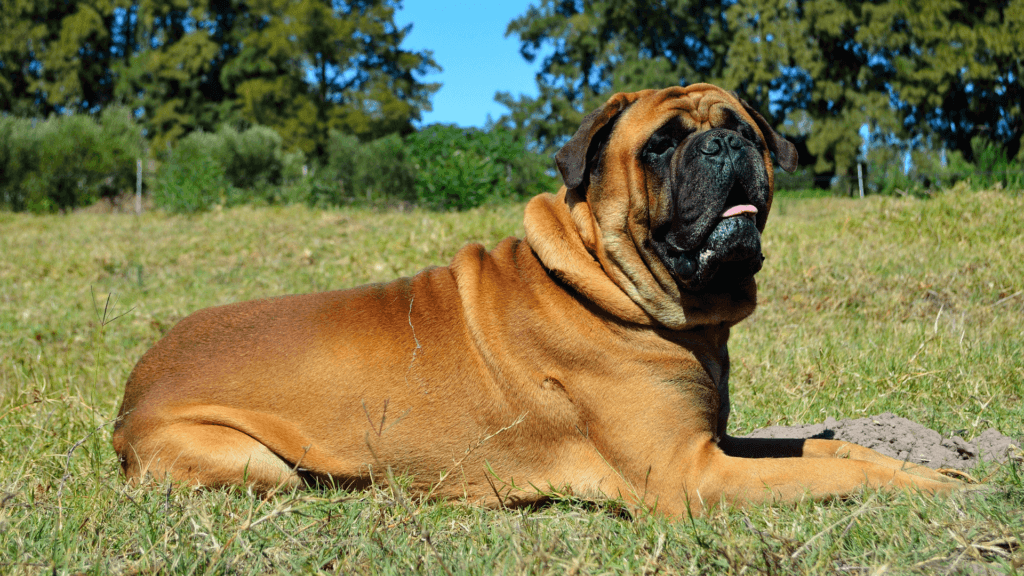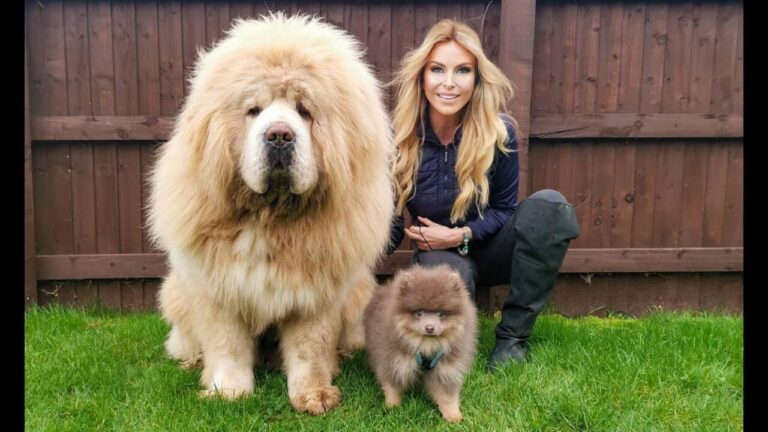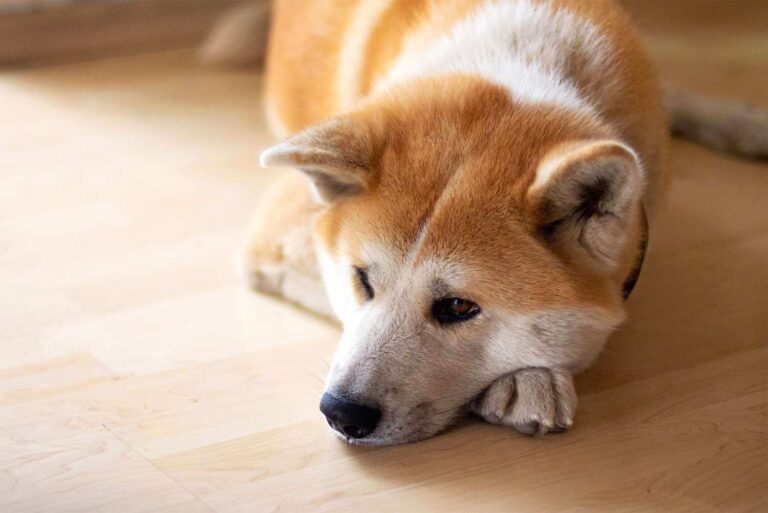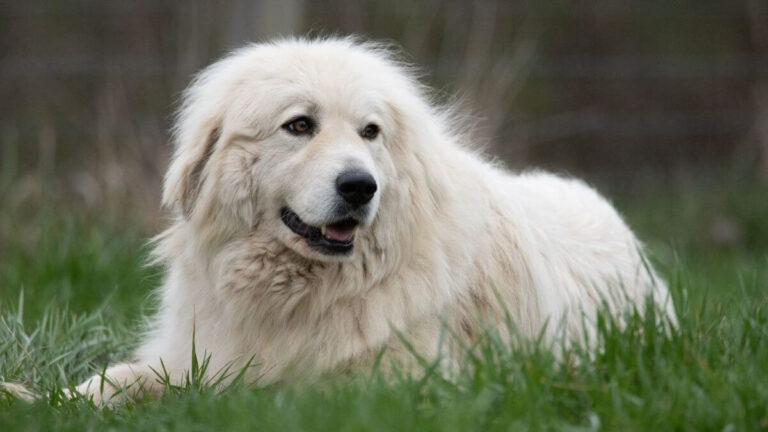Bullmastiff Dog Breed: The Ultimate Guide
The Bullmastiff is a majestic and powerful breed that captures the hearts of many dog lovers. Originally bred in England during the 19th century, these gentle giants have a fascinating history and a unique purpose that sets them apart from other breeds.
Contents
Origin and History
The Bullmastiff’s story begins in the 1800s when gamekeepers needed a reliable, strong, and quiet dog to help them protect large estates from poachers. By crossing the tenacious Bulldog with the large and powerful Mastiff, they created the perfect blend of strength, size, and agility.
These dogs were nicknamed “The Gamekeeper’s Night Dog” due to their ability to silently track and hold down intruders without mauling them. This unique skill made them invaluable to estate owners and law enforcement alike.
Breed Purpose and Development
As the need for estate guard dogs diminished, the Bullmastiff’s role evolved. They transitioned from working dogs to loyal family companions and protectors. The breed was officially recognized by the English Kennel Club in 1924 and by the American Kennel Club in 1933.
Today, Bullmastiffs are prized for their gentle nature with family members and their natural protective instincts. They excel as family pets, therapy dogs, and in some cases, continue their ancestral role as guard dogs.
Physical Characteristics

Bullmastiffs are imposing dogs with a distinctive appearance that commands respect and admiration.
Size and Weight
Male Bullmastiffs typically stand 25 to 27 inches at the shoulder and weigh between 110 to 130 pounds. Females are slightly smaller, ranging from 24 to 26 inches in height and weighing 100 to 120 pounds. Despite their size, they’re surprisingly agile and can move with unexpected speed when necessary.
Coat Colors and Texture
The Bullmastiff’s coat is short, dense, and weather-resistant. It comes in three primary colors:
- Fawn: Ranging from light fawn to reddish-gold
- Red: A deeper, richer shade than fawn
- Brindle: A tiger-striped pattern of dark stripes over a fawn or red base color
Some Bullmastiffs may have small white markings on the chest, but extensive white is considered a fault in show dogs.
Distinctive Features
What truly sets the Bullmastiff apart is its broad, wrinkled head and short, wide muzzle. Their dark eyes are set wide apart, giving them an alert and intelligent expression. The breed’s trademark black mask accentuates their facial features and adds to their distinctive look.
Temperament and Personality
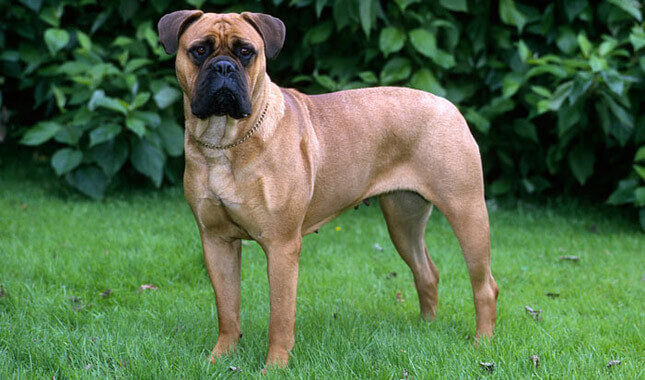
Bullmastiffs are known for their calm and loving nature, combined with a natural protective instinct.
Loyal and Protective Nature
These dogs form incredibly strong bonds with their families. They’re often described as “silent shadows,” quietly following their loved ones from room to room. While generally peaceful, a Bullmastiff won’t hesitate to step in if they perceive a threat to their family.
Their protective nature is innate, not taught. This means they don’t typically bark unnecessarily but will alert you to genuine concerns. Their imposing presence alone is often enough to deter potential intruders.
Interaction with Family and Children
Bullmastiffs are gentle giants when it comes to their families. They’re patient and tolerant with children, often forming special bonds with the little ones in the household. However, due to their size, supervision is crucial during interactions with small children to prevent accidental bumps or knocks.
These dogs thrive on human companionship and don’t do well when left alone for long periods. They’re happiest when they can be close to their family, whether it’s lounging on the couch or joining in on family activities.
Behavior with Other Pets
Early socialization is key when it comes to a Bullmastiff’s interactions with other animals. When properly introduced and raised together, they can get along well with other dogs and even cats. However, some Bullmastiffs may have a strong prey drive and might not be suitable for homes with small pets like rabbits or guinea pigs.
Male Bullmastiffs can sometimes be territorial with other male dogs, so careful introductions and ongoing training are important.
Care and Maintenance
Caring for a Bullmastiff requires dedication, but their loving nature makes it all worthwhile.
Grooming Requirements
Despite their size, Bullmastiffs are relatively low-maintenance when it comes to grooming. Their short, dense coat needs weekly brushing to remove loose hair and distribute skin oils. During shedding seasons (typically spring and fall), more frequent brushing may be necessary.
Pay special attention to the folds on their face, keeping them clean and dry to prevent skin irritations. Regular nail trims, ear cleaning, and teeth brushing should also be part of their grooming routine.
Exercise Needs
Bullmastiffs have moderate exercise needs. Daily walks and playtime are essential for their physical and mental well-being. However, be cautious not to over-exercise them, especially in hot weather, as they can be prone to overheating due to their brachycephalic (flat-faced) nature.
Aim for about 30 minutes to an hour of exercise per day, split into two or more sessions. Activities like short walks, gentle play sessions, and mental stimulation games are ideal. Remember, a tired Bullmastiff is a happy Bullmastiff!
Nutritional Considerations
Proper nutrition is crucial for maintaining a Bullmastiff’s health. As large dogs, they require a high-quality diet formulated for large breeds. Puppies should be fed large-breed puppy food to support their rapid growth while helping to prevent joint issues.
Adult Bullmastiffs typically need 3 to 5 cups of dry food per day, divided into two meals. However, the exact amount will depend on the dog’s age, size, activity level, and the specific food being fed. Always consult with your veterinarian to determine the best diet plan for your Bullmastiff.
Be cautious about overfeeding, as Bullmastiffs can be prone to obesity. Keep treats to a minimum and avoid feeding them table scraps.
Health and Lifespan
Like all breeds, Bullmastiffs have some health concerns that potential owners should be aware of.
Average Lifespan
The average lifespan of a Bullmastiff is 7 to 9 years. While this may seem short compared to some smaller breeds, many Bullmastiffs live happy, healthy lives well into their teens with proper care and attention to their health needs.
Common Health Issues
Bullmastiffs can be prone to certain health conditions, including:
- Hip and Elbow Dysplasia: Joint malformations that can lead to arthritis
- Bloat (Gastric Dilatation-Volvulus): A life-threatening condition where the stomach fills with gas and twists
- Cancer: Various types, including lymphoma and mast cell tumors
- Heart problems: Including dilated cardiomyopathy
- Eye issues: Such as entropion and progressive retinal atrophy
- Hypothyroidism: An underactive thyroid gland
Preventive Care and Regular Check-ups
Regular veterinary check-ups are essential for maintaining your Bullmastiff’s health. Annual examinations, vaccinations, and preventive treatments for parasites are crucial.
Consider hip and elbow evaluations, as well as regular eye and heart checks. Early detection of potential issues can significantly improve outcomes and quality of life.
Maintaining a healthy weight through proper diet and exercise is one of the best things you can do to support your Bullmastiff’s overall health and longevity.
Training and Socialization
Training a Bullmastiff requires patience, consistency, and a gentle touch.
Obedience Training Tips
Bullmastiffs are intelligent dogs but can have an independent streak. Start training early and use positive reinforcement techniques. These sensitive dogs respond best to praise, treats, and gentle guidance rather than harsh corrections.
Keep training sessions short and fun to maintain their interest. Focus on basic obedience commands like sit, stay, come, and leave it. Teaching a solid “down-stay” is particularly useful given their size.
Remember, Bullmastiffs mature slowly, both physically and mentally. Be patient and consistent in your training approach, and you’ll be rewarded with a well-behaved companion.
Early Socialization Importance
Socialization is crucial for Bullmastiffs. Expose your puppy to a wide variety of people, animals, and situations from an early age. This helps prevent fear or aggression issues later in life.
Puppy classes are an excellent way to combine early training with socialization. Continue socializing your Bullmastiff throughout their life to maintain their good manners and comfort in various situations.
Addressing Potential Behavior Challenges
Some common behavior challenges with Bullmastiffs include:
- Stubbornness: Be patient and persistent in your training.
- Protectiveness: Teach them to distinguish between genuine threats and normal situations.
- Drooling: While not a behavior issue per se, be prepared with towels!
- Pulling on leash: Start leash training early and use appropriate equipment.
Remember, many behavior issues can be prevented or mitigated through proper training, socialization, and meeting your dog’s physical and mental needs.
Bullmastiff as a Family Pet
Bullmastiffs can make wonderful family companions for the right households.
Suitability for Different Households
Bullmastiffs adapt well to various living situations, from spacious homes to apartments, as long as their exercise needs are met. They’re generally quiet dogs, which makes them good neighbors.
They’re best suited for families who:
- Can provide consistent leadership and training
- Have time for daily exercise and companionship
- Don’t mind some drooling and shedding
- Appreciate a large, loyal companion
Space Requirements
While Bullmastiffs can adapt to apartment living, they do best in homes with at least a small yard. Inside, they need room to move around comfortably and a cozy spot to call their own.
Remember, these are large dogs who may accidentally knock things over with their tail or body. “Bull in a china shop” can sometimes be an apt description!
Time and Attention Needs
Bullmastiffs thrive on human companionship and don’t do well when left alone for long periods. They’re happiest when they can be part of family activities and daily routines.
While not as high-energy as some breeds, they still need daily exercise, mental stimulation, and plenty of affection. If you’re looking for a dog that will be content to lounge by your side while you work or watch TV, a Bullmastiff might be perfect for you.
Choosing a Bullmastiff Puppy
If you’ve decided a Bullmastiff is right for you, the next step is finding the right puppy or adult dog.
Reputable Breeder vs. Adoption
Both buying from a reputable breeder and adopting from a rescue have their merits. A good breeder will health test their breeding stock and raise puppies in a home environment, giving them a great start in life. They can also provide ongoing support and guidance.
Adoption can be a wonderful option, especially for adult dogs. Many Bullmastiffs end up in rescue through no fault of their own, often due to changes in their owner’s circumstances. Rescue organizations can often provide detailed information about a dog’s personality and needs.
What to Look for in a Healthy Puppy
When choosing a Bullmastiff puppy, look for:
- Clear, bright eyes without discharge
- Clean ears
- Healthy skin and coat
- No signs of lameness or joint issues
- A friendly, curious temperament
Puppies should be well-socialized and raised in a clean, loving environment. They should have received appropriate vaccinations and deworming for their age.
Questions to Ask Before Bringing One Home
Whether you’re dealing with a breeder or rescue, don’t hesitate to ask questions. Some important ones include:
- Can you provide health clearances for the parents (if buying from a breeder)?
- What socialization has the puppy/dog received?
- What is the puppy/dog’s current diet?
- Are there any known health or behavior issues?
- What support do you offer after I take the puppy/dog home?
Remember, a responsible breeder or rescue will be just as interested in making sure you’re a good fit for their puppies or dogs as you are in finding the right dog for you.
Bullmastiff in Popular Culture
While not as ubiquitous in media as some breeds, Bullmastiffs have made their mark in popular culture.
Famous Bullmastiffs
One of the most famous Bullmastiffs was “Swagger,” the live mascot for the Cleveland Browns NFL team from 2013 to 2019. Swagger attended all home games and was beloved by fans.
In the world of celebrity pets, Sylvester Stallone owned a Bullmastiff named Butkus during his early acting days. Butkus even appeared in the first two Rocky movies.
Breed Appearances in Media
Bullmastiffs have appeared in various movies and TV shows, often portraying loyal family pets or imposing guard dogs. Notable appearances include:
- The Bullmastiff in the movie “See Spot Run” (2001)
- The family dog in “Hotel for Dogs” (2009)
- Recurring appearances in the British TV series “Midsomer Murders”
While not always accurately portrayed (Hollywood often exaggerates their aggressive potential), these appearances have helped raise awareness of the breed.
Frequently Asked Questions
Here are some common questions potential Bullmastiff owners often ask:
Q: Do Bullmastiffs drool a lot?
A: Yes, Bullmastiffs are known for drooling, especially after eating or drinking, or when they’re excited.
Q: Are Bullmastiffs good with children?
A: Generally, yes. They’re typically gentle and patient with children, but supervision is important due to their size.
Q: How much exercise do Bullmastiffs need?
A: Moderate exercise of about 30-60 minutes per day, split into two or more sessions, is usually sufficient.
Q: Are Bullmastiffs easy to train?
A: They can be stubborn, but with patience and positive reinforcement, they’re quite trainable.
Q: Do Bullmastiffs shed a lot?
A: They have a short coat that sheds moderately year-round, with heavier shedding seasons twice a year.
Conclusion: Is a Bullmastiff Right for You?
Bullmastiffs are magnificent dogs that can make loving and loyal companions for the right families. Their gentle nature, combined with their natural protective instincts, makes them excellent family dogs.
Pros of Owning a Bullmastiff:
- Loyal and affectionate with family
- Natural protectors
- Generally good with children
- Low to moderate exercise needs
- Adaptable to various living situations
Cons to Consider:
- Large sizes may not suit all homes
- Potential for drooling and shedding
- Can be stubborn, requiring patient training
- Relatively short lifespan
- Potential for certain health issues
In the end, owning a Bullmastiff is a significant commitment. They require time, patience, and understanding of their unique needs. But for those who can provide the right environment, the love and companionship of a Bullmastiff is truly special.
If you’re drawn to the idea of a gentle giant who will be your faithful protector and loving family member, a Bullmastiff might just be the perfect dog for you. Remember, responsible ownership is key to ensuring both you and your Bullmastiff have a happy, healthy life together.
- Golden Retriever Pros and Cons: What Every Pet Parent Should Know - 15 September 2025
- Cane Corso Dog Breed: Health, Care, and Lifespan - 14 September 2025
- Catahoula Leopard Dogs: Description, Temperament, Lifespan, & Facts - 21 July 2025

